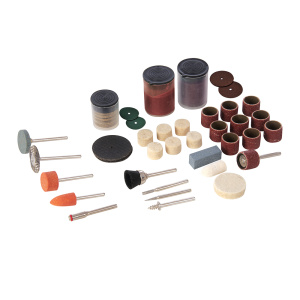The surface preparation of steel is determined by the amount of surface contaminates left behind. For instance, blast cleaning a surface to SA3 is regarded as the highest level of preparation on steel due to the fact that the metal is left bright clean with no oxides present. At the point of deciding what level of blast cleaning you expect to achieve it’s wise to decide to what depth you are going to blast to, making sure your coating system will cover this depth is critical, read more by clicking here.
The table below will give you a guide to use when deciding the level of blast preparation required.
|
Blast Cleaning Standard – Most thorough to least |
|
|
|
White Metal |
SA3, Nace 1, SSPC5 |
White Metal – Visible mill scale, rust and foreign particles are entirely removed. The cleaned surface should have a uniform metallic colour but may show varying shades of grey when viewed at different angles. |
|
Near White Metal |
SA2.5, Nace 2, SSPC10 |
Near White Metal – Mill scale, rust and foreign particles are removed to the extent that only traces remain in the form of spots or stripes. The cleaned surface will show varying shades of grey. |
|
Commercial Blast Cleaning |
SA2, Nace 3, SSPC6 |
Commercial – Mill scale, rust and foreign particles are substantially removed, and grey metal is visible. |
|
Brush Off |
SA1, Nace 4, SSPC7 |
Brush Off – Loose mill scale, loose rust and foreign particles are removed. |
Of course, not every project is going to be blast cleaned and there are a number of tools that can be used manually to remove surface contaminates
The table below relates to non-blasting cleaning preparation,
|
Manual Cleaning Standard – Most thorough to least |
|
|
|
Power Tool Cleaning |
ST3 |
Thorough cleaning done using power tools, after which there will be a more pronounced metallic sheen. |
|
Hand Tool Cleaning |
ST2 |
The surface may still show signs of corrosion after cleaning to this standard BUT there will be no loose rust and there should be a faint metallic sheen |
Rustbuster supply many different powered and non-powered tolls for the preparation of surfaces and these can be found by click here
For most DIY restorers, mechanical rust removal will involve the use of one or more of these:
- Scotchbrite pads.
- Sandpaper.
- Wooden-handled wire brushes.
- Wire wheels that attach to a drill or angle grinder.
- A specialist tool such as the MBX.
Chemical rust removal
Even after the most thorough mechanical rust removal, a chemical treatment may be needed to tackle minute traces of rust that can remain in the metal. Chemical treatments may also be used as a standalone alternative to mechanical removal.
Chemical rust removers are available in acid-based and non-acid formulas. So, which is likely to be right for you?
Our general advice is to start with non-acid rust removers such as Rustbuster’s Safer Rust Remover if you are new to the use of chemical removers. This tends to work slower than acid-based products, but the upside is that it is non-corrosive, so it removes the risk of damaging the metal once the rust is removed. Mixed-material components can also be treated as Safer Rust Remover won’t damage rubber or gasket material. Residue is easily washed off after use with water.
Acid-based products require greater care during application but can give quicker results. Rustbuster’s Phos-Kleen A Rust Remover is designed for commercial use, although it can be used by the DIY enthusiast as long as our strict safety standards are followed. But beware: this product works fast, and metal treated with it should not be left unattended. Once the desired level of rust removal has been achieved, the metal should ideally be neutralised with Chlor-X DTS.
To stress how powerful Phos-Kleen A really is, please think of it as a ‘metal remover’. It doesn’t differentiate between rusty and good metal BUT it will remove rust first, as it starts from the surface down. If left long enough, it could dissolve your car!


